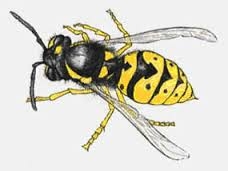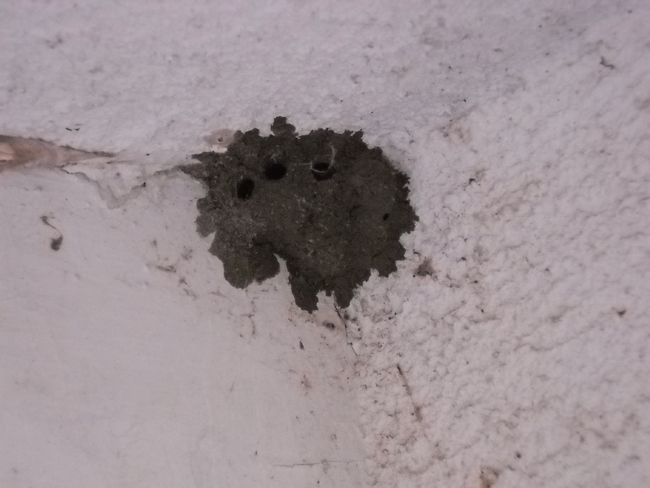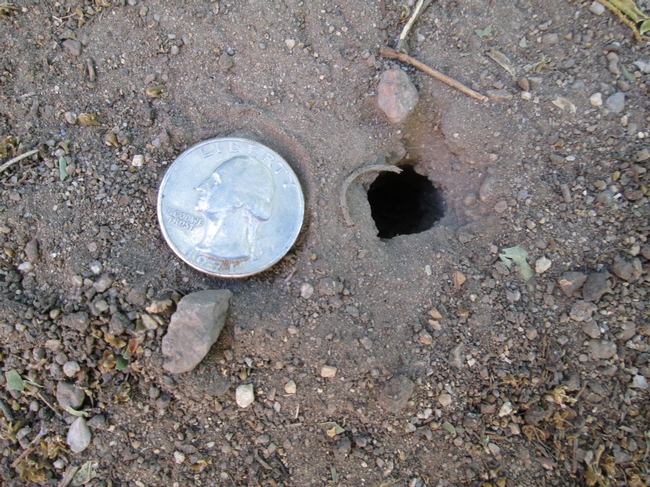Many people become panicked and reach for insecticidal sprays at the mere glimpse of a black and yellow striped insect without realizing that it may in fact not be a stinging wasp, but rather a harmless syrphid fly, a native bee, some other beneficial insect, or even a harmless wasp mimic. There are said to be 18,000 wasp species in North America, and only a few of these cause problems to humans.
In my garden 2017 could be described as “The Year of the Wasp” with sightings of many different species, some in huge numbers, an event which encouraged me to do some research on the subject. Most wasps are beneficial since they live on a range of other insects, many of which we don't want in our gardens; aphids, caterpillars, grasshoppers and crickets, and spiders and even young cockroaches.
The downside is that they are capable of stinging to various degrees, and the worst species have extremely painful stings. However, there are many which are reluctant to sting, or whose sting is not particularly painful.
Vespid Wasps are social wasps sometimes known as paper wasps since they make nests of a papery material and the two species which occur most frequently in our area are yellow jackets and paper wasps.
Yellowjackets (Vespula ssp.) are social wasps, but queens overwinter alone, and then find a suitable sheltered nesting site in the spring. The nest begins as a ball-shaped cluster of cells covered in a smooth papery cover. As further generations develop they add to the nest, layer upon layer until it may reach 1 foot across. We are familiar with these black and yellow striped wasps ruining our picnics as they try to carry off scraps of food from our plates, or fall into a glass of beer or a can of soda (where they might not be noticed). They have a painful sting which for some people can be life-threatening, are intimidating at best, and can become quite aggressive. Last autumn there was a huge influx of yellow jackets in the Lake Tahoe region to the point where the coniferous forests were humming with them, and sitting or eating outside became impossible. So, beneficial as these are for their insect eating abilities their nuisance factor outweighs the good that they do, and if they decide to nest around your home or in high traffic areas it is wise to have them professionally exterminated.
For more information on Integrated Pest Management control : http://ipm.ucanr.edu/PMG/PESTNOTES/pn7450.html Yellow jackets and other social wasps.
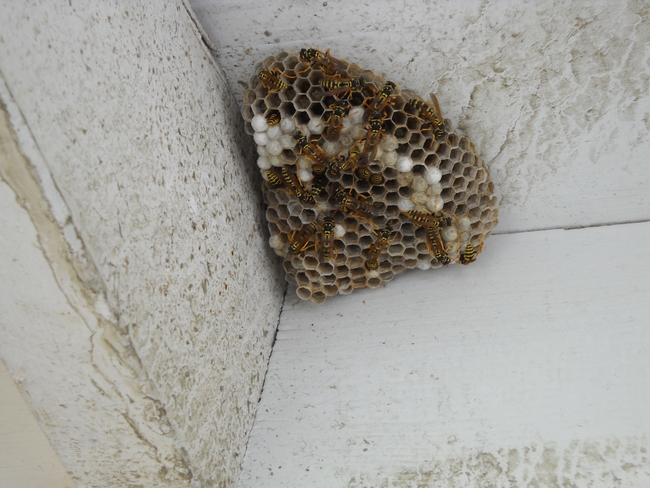
https://pestid.msu.edu/insects-and-arthropods/european-paper-wasp/
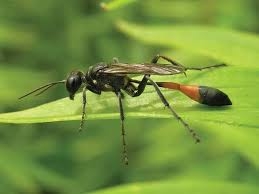
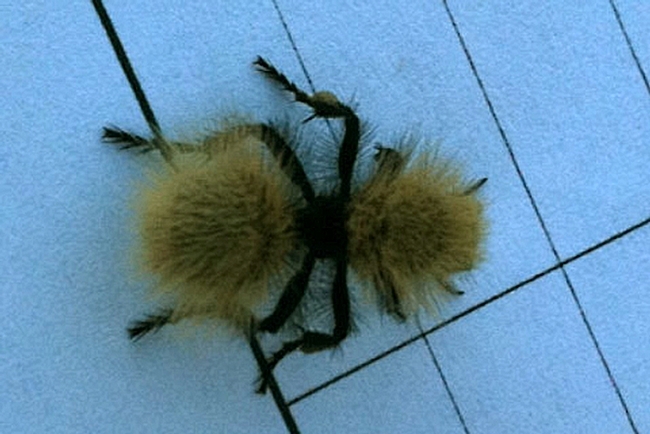
http://www.bbc.com/earth/story/20151014-superpowers-of-the-near-invincible-velvet-ant
The Mud Dauber wasps, as the name suggests, make nests out of mud. These may look like clumps of mud stuck on a wall, or occasionally like carefully constructed black organ pipes stuck together in sheltered places such as garages or porches. The wasps provision their nests with spiders so are very definitely my friends! The wasps themselves are about an inch long and appear black overlaid with an electric blue color which is apparent in sunlight. Like many other solitary wasps they don't seem to be aggressive and only chose to sting if threatened.
Attached Images:
